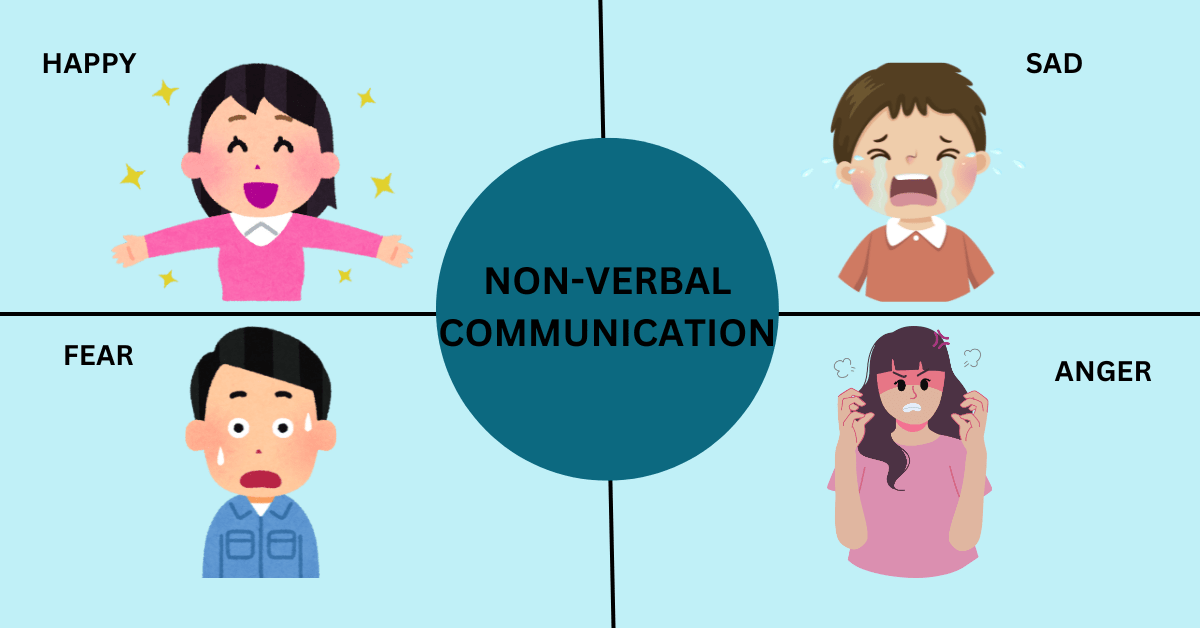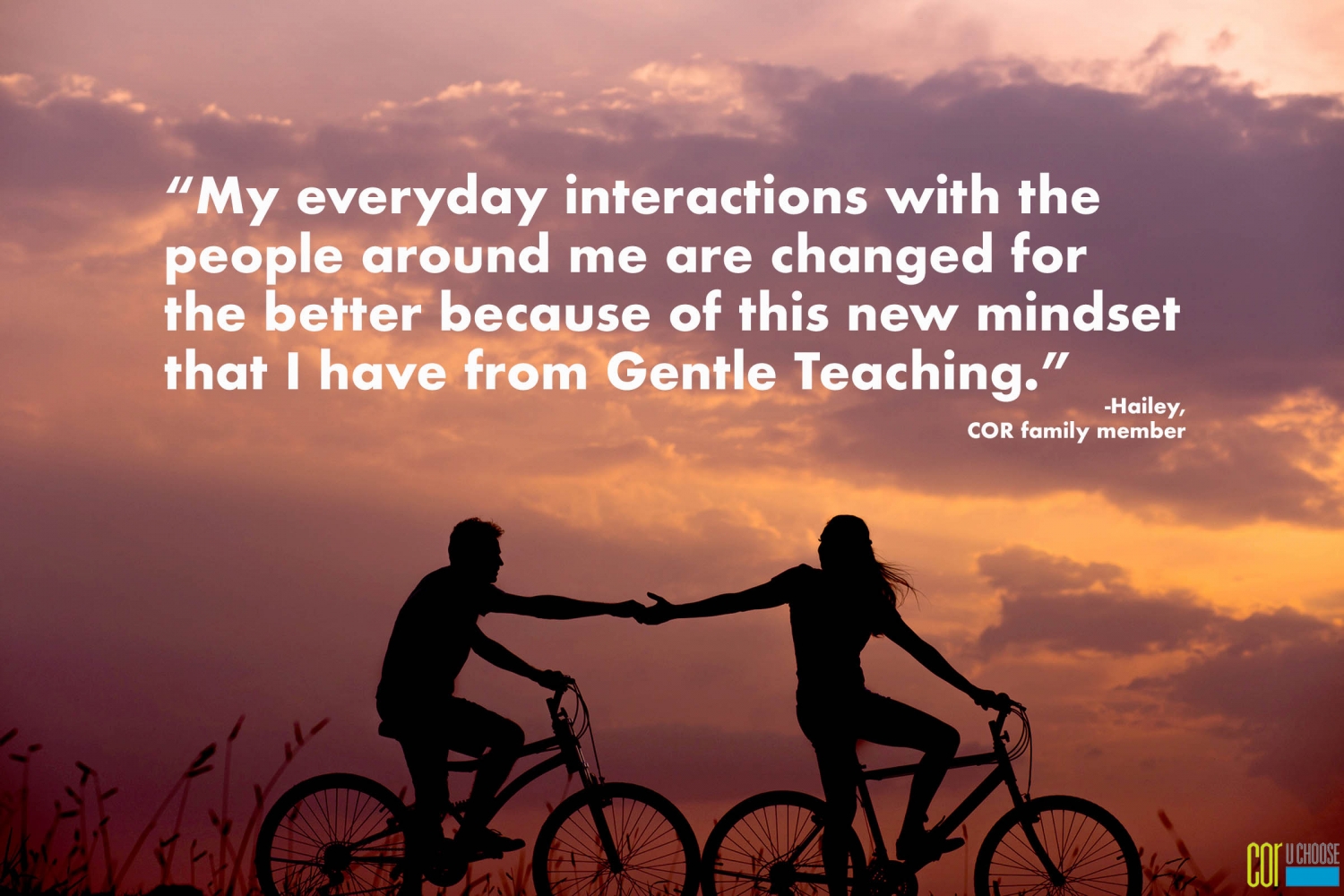Key Takeaways
- Body language makes up about 80% of all communication, so understanding it can greatly enhance your interactions.
- Facial expressions are universal indicators of emotion; a smile typically signifies friendliness, while a frown can indicate displeasure.
- Gestures, like waving or nodding, are powerful tools for emphasizing points and conveying agreement or disagreement.
- Maintaining eye contact shows confidence and sincerity, while avoiding it can make you appear evasive or untrustworthy.
- Personal space varies by culture; standing too close can make someone uncomfortable, while too much distance might seem aloof.
Discover the Power of Body Language in Communication

“10 Body Language Tips that Make Your …” from yourstory.com and used with no modifications.
Body language is a silent orchestra, where every gesture, posture, and expression plays a part in the symphony of human interaction. It’s the unsaid words that bridge the gap between what we say and what we mean. Understanding these cues can transform your communication skills, making you more persuasive, empathetic, and effective.
Importance of Body Language in Everyday Interaction
Most importantly, body language is a cornerstone of daily communication. It often speaks louder than words, providing context and depth to our spoken language. Whether you’re in a business meeting, on a date, or simply chatting with friends, your body language can convey confidence, sincerity, or, conversely, insecurity and deceit.
Think about a time when someone said one thing but their body seemed to say another. Maybe they agreed verbally, but their crossed arms and lack of eye contact suggested reluctance. These nonverbal cues are crucial to understanding the true message.
The Science behind Nonverbal Communication
The science of body language is rooted in psychology and anthropology. Studies show that nonverbal communication often accounts for the majority of the information we receive in a conversation. According to research, facial expressions alone can convey a wide range of emotions across different cultures, suggesting a universal language of sorts.
For instance, a smile is recognized worldwide as a sign of happiness or friendliness. Conversely, a furrowed brow typically indicates confusion or concern. These expressions are processed by the brain’s limbic system, which is responsible for emotion and memory, allowing us to quickly interpret others’ feelings and intentions. Understanding these signals can be a part of wisdom development and improving interpersonal skills.

“Importance of Non-Verbal Communication …” from engvarta.com and used with no modifications.
Impact of Body Language on Perception and Relationships
Body language significantly influences how others perceive us and can strengthen or weaken relationships. For example, maintaining open body language, such as uncrossed arms and a relaxed posture, can make you seem approachable and trustworthy. On the other hand, closed body language can create barriers and lead to misunderstandings.
Consider how a firm handshake can set the tone for a business meeting, suggesting confidence and professionalism. In contrast, a weak handshake might imply uncertainty or lack of interest. Therefore, understanding and mastering body language can be a powerful tool in both personal and professional settings.
Different Types of Body Language
Body language can be broken down into several types, each with its unique role in communication. From facial expressions to gestures, understanding these categories can help you become more aware of your own nonverbal signals and better interpret those of others.
Facial Expressions: What Your Face Reveals
Your face is the most expressive part of your body. It can reveal your emotions even when you don’t say a word. For instance, a genuine smile involves not just the mouth but also the eyes, creating crow’s feet, which is often referred to as a Duchenne smile. This type of smile is typically seen as more genuine and warm.
Example: When you meet someone new and smile genuinely, they are more likely to perceive you as friendly and open, fostering a positive first impression. This can be an effective strategy for building persistence in social interactions.
Facial expressions are powerful because they are often involuntary, providing honest insights into our feelings. Recognizing these expressions in others can help you respond more empathetically and appropriately. Understanding how to boost mental health with acceptance can further enhance your ability to connect with others.
Gestures: How Hand Movements Speak Volumes
Gestures are another critical aspect of body language. They can emphasize points, indicate direction, or express emotions. For instance, waving is a universal gesture for greeting or bidding farewell. A thumbs-up can signal approval, while a thumbs-down often indicates disapproval.
When speaking, hand gestures can help illustrate your message and make it more engaging. However, excessive or mismatched gestures can distract from your message, so it’s essential to use them judiciously.
Posture: The Message Your Stance Sends
Your posture can say a lot about your attitude and confidence level. Standing or sitting up straight often conveys confidence and attentiveness, while slouching might suggest disinterest or lack of energy. Therefore, maintaining good posture can positively influence how others perceive you.
Eye Contact: Communicating Through Gaze
Eye contact is a powerful tool in communication. It can convey interest, sincerity, and confidence. Maintaining eye contact while speaking shows that you are engaged and trustworthy. Conversely, avoiding eye contact might make you appear evasive or untrustworthy.
However, it’s important to balance eye contact, as too much can be perceived as aggressive or intimidating. A good rule of thumb is to maintain eye contact for about 50-70% of the conversation.
Proxemics: The Significance of Personal Space
Proxemics, or the use of personal space, varies widely across cultures and situations. Understanding the appropriate distance to maintain can prevent discomfort and facilitate better communication. Standing too close can make someone feel crowded, while too much distance might suggest aloofness.
In general, social space ranges from 4 to 12 feet, while personal space is typically 1.5 to 4 feet. Being aware of these boundaries can help you navigate social interactions more effectively.

“Body language includes different types …” from www.researchgate.net and used with no modifications.
Key Body Language Examples and Their Meanings
Understanding specific body language examples can significantly enhance your ability to communicate effectively. Each gesture, posture, and expression carries its own meaning and can vary depending on the context. Recognizing these signals can help you interpret others’ intentions more accurately and adjust your own nonverbal cues accordingly.
For instance, nodding while someone is speaking usually indicates agreement and attentiveness. However, rapid nodding might suggest impatience or a desire for the speaker to hurry up. Therefore, context and subtle variations are essential when interpreting body language.
Example: During a job interview, maintaining good eye contact and nodding occasionally while the interviewer speaks can demonstrate your interest and engagement, potentially leaving a positive impression.
Being aware of these nuances can help you respond appropriately and build stronger connections with others. In professional settings, understanding these cues can also improve teamwork and collaboration.
Besides that, knowing how to project positive body language can enhance your personal and professional relationships. It can make you appear more confident, approachable, and trustworthy.
Open vs. Closed Body Language
Open body language typically signifies receptiveness and friendliness. It includes gestures such as uncrossed arms, relaxed posture, and direct eye contact. These signals indicate that you are approachable and willing to engage in conversation.
Examples of Dominance and Submission Signals
Body language can also convey dominance or submission. Dominance is often expressed through expansive gestures, such as taking up more space, standing tall, and making firm eye contact. On the other hand, submission might be indicated by lowered eyes, a bowed head, or taking up less space.
- A dominant person might place their hands on their hips or use a firm handshake to assert authority.
- Conversely, a submissive individual may avoid eye contact or keep their hands close to their body.
Recognizing these signals can help you navigate power dynamics in social and professional interactions. Adjusting your body language to suit the situation can also enhance your influence and effectiveness.
Indications of Confidence and Nervousness
Confidence and nervousness are often conveyed through body language. Confident individuals tend to have an upright posture, maintain eye contact, and use open gestures. These signals suggest self-assurance and competence.
Interpreting Body Language Accurately
Accurate interpretation of body language requires attention to detail and an understanding of context. It’s essential to consider the situation, cultural norms, and individual differences when analyzing nonverbal cues. Misinterpretation can lead to misunderstandings and conflict, so careful observation is crucial.
Contextual Analysis: Considering the Environment
The environment plays a significant role in body language interpretation. For example, crossed arms might indicate defensiveness in one context but could simply be a comfortable resting position in another. Therefore, it’s important to assess the surroundings and circumstances before drawing conclusions.
In a crowded room, maintaining eye contact might be challenging due to distractions, while in a quiet setting, it could be easier and more expected. Understanding these nuances can help you interpret body language more accurately.
Cultural Variability in Nonverbal Communication
- In some cultures, direct eye contact is a sign of respect, while in others, it may be considered rude or confrontational.
- Gestures like nodding or shaking the head can have different meanings across cultures, so it’s essential to be aware of these differences.
- Personal space preferences vary, with some cultures favoring close proximity and others valuing more distance.
Being culturally sensitive to these variations can improve your communication skills and help you avoid unintentional offenses. It also demonstrates respect and understanding, which can strengthen relationships.
Besides cultural factors, individual differences such as personality and mood can also influence body language. Therefore, it’s important to consider the person’s unique characteristics when interpreting their nonverbal cues.
Common Misinterpretations and How to Avoid Them
Misinterpretations of body language are common, but they can be minimized with careful observation and context consideration. One common mistake is assuming that a single gesture has a universal meaning. Instead, look for clusters of signals that reinforce each other. For more on enhancing your understanding, explore these self-respect tips to improve personal interactions.
Another common error is neglecting the influence of emotions on body language. A person who is anxious or stressed might exhibit nervous gestures that could be mistaken for dishonesty or lack of interest. To better manage these emotions, consider exploring coping strategies for rejection which can help in reducing stress and anxiety.
- Always consider the context and environment when interpreting body language.
- Look for clusters of signals rather than relying on a single gesture.
- Be aware of cultural differences and individual variations in nonverbal communication.
By applying these strategies, you can improve your ability to interpret body language accurately and avoid common pitfalls.

“Misinterpretation Stock Illustrations …” from www.dreamstime.com and used with no modifications.
Improving Your Body Language for Better Communication
Improving your body language can enhance your communication skills and help you connect more effectively with others. By being mindful of your nonverbal cues, you can project confidence, approachability, and sincerity.
Techniques for Enhancing Positive Body Language
There are several techniques you can use to enhance your body language. Start by practicing good posture, as it conveys confidence and attentiveness. Keep your shoulders back, head up, and avoid slouching. For more insights, explore essential body language examples and their meanings.
Using open gestures, such as uncrossed arms and a relaxed stance, can make you appear more approachable. Smiling genuinely and maintaining appropriate eye contact also contribute to positive body language.
- Practice good posture by standing and sitting up straight.
- Use open gestures to appear more approachable and friendly.
- Smile genuinely and maintain appropriate eye contact to convey confidence and sincerity.
How to Avoid Negative Nonverbal Signals
- Avoid crossing your arms, as it can be perceived as defensive or closed off.
- Be mindful of fidgeting or excessive gestures, as they can distract from your message.
- Maintain a relaxed posture to avoid appearing tense or anxious.
By being aware of these negative signals and making a conscious effort to avoid them, you can improve your body language and enhance your communication skills.
Remember, body language is a powerful tool in communication. By understanding and mastering it, you can build stronger relationships, improve your influence, and achieve greater success in both personal and professional settings.
Tips for Consistent and Authentic Body Language
To maintain consistent and authentic body language, it’s crucial to be aware of your nonverbal cues and align them with your verbal messages. This alignment ensures that you communicate clearly and sincerely. One effective way to achieve this is by practicing mindfulness. Being present in the moment helps you become more aware of your body language and how it aligns with your words. For more on enhancing your self-awareness, consider these self-respect tips to improve personal respect.
Additionally, seek feedback from trusted friends or colleagues. They can provide valuable insights into how your body language is perceived by others. Regular practice and self-reflection can help you develop a more authentic and consistent nonverbal communication style.
Conclusion: Harnessing the Power of Body Language
Body language is an essential aspect of communication that can significantly impact your personal and professional relationships. By understanding and mastering the different types of body language, you can enhance your ability to connect with others and convey your messages effectively. Remember, body language is not just about what you say, but how you say it. Your gestures, expressions, and posture all contribute to the overall message you communicate.
Integrating Body Language into Everyday Communication
To integrate body language into your everyday communication, start by observing others and paying attention to their nonverbal cues. Notice how their body language aligns with their words and how it affects the interaction. Practice incorporating positive body language into your own communication by maintaining good posture, making eye contact, and using open gestures.
As you become more aware of your body language, you’ll find it easier to adjust your nonverbal cues to suit different situations and audiences. This adaptability will enhance your ability to communicate effectively and build stronger connections with others. For more insights, explore these top methods for wisdom development that can further improve your communication skills.
The Long-Term Benefits of Mindful Nonverbal Interaction
Mindful nonverbal interaction offers numerous long-term benefits. It can improve your relationships by fostering trust and understanding, enhance your professional reputation by conveying confidence and competence, and increase your overall communication effectiveness. By consistently practicing mindful body language, you’ll develop a deeper awareness of yourself and others, leading to more meaningful and successful interactions. For additional insights, explore these scientific benefits of mindful listening.

“Embracing Gentle Teaching: Transforming …” from gentleteaching.com and used with no modifications.
Frequently Asked Questions (FAQ)
Understanding body language can be complex, but it’s an invaluable skill. Below are some frequently asked questions to help you navigate this essential aspect of communication. For a deeper dive, explore how to understand body language and facial expressions.
What role does body language play in effective communication?
Body language plays a crucial role in effective communication by providing additional context to verbal messages. It can reinforce what is being said, express emotions, and convey confidence or uncertainty. By being aware of your body language, you can ensure that your nonverbal cues support your verbal communication, leading to clearer and more effective interactions.
How does cultural background influence body language interpretation?
Cultural background significantly influences how body language is interpreted. Different cultures have varying norms regarding gestures, eye contact, and personal space. For example, direct eye contact may be seen as respectful in some cultures, while in others, it might be considered rude. Understanding these cultural differences is essential for effective cross-cultural communication.
What are some common body language mistakes to avoid?
Common body language mistakes include crossing your arms, avoiding eye contact, and fidgeting. These actions can be perceived as defensive, untrustworthy, or nervous. To avoid these mistakes, practice maintaining open gestures, making appropriate eye contact, and staying still when listening to others. These adjustments can improve your nonverbal communication and how others perceive you. For further insights, explore wisdom development methods to enhance your overall well-being.
Can you improve your body language with practice?
Yes, you can improve your body language with practice. By becoming more aware of your nonverbal cues and actively working to align them with your verbal messages, you can enhance your communication skills. Regular practice, feedback from others, and self-reflection are key to developing more effective body language.
How can body language affect professional relationships?
Body language can significantly affect professional relationships by influencing how others perceive your competence, confidence, and trustworthiness. Positive body language, such as maintaining good posture and making eye contact, can enhance your professional image and foster trust. Conversely, negative body language can undermine your credibility and damage relationships. By mastering your body language, you can improve your professional interactions and career success. For more insights, explore how to understand body language and its impact on communication.
By understanding and harnessing the power of body language, you can enhance your communication skills and build stronger, more meaningful relationships in all areas of your life.










Leave a Reply